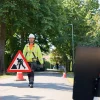UK Budget 2016 – No Big New Bits for Boosting Broadband Connectivity
The Chancellor of the Exchequer, George Osborne, has today set out the annual Budget 2016 report for the United Kingdom, which among other things announced the plan to publish a strategy for 5G mobile services in 2017 and the release of more radio spectrum below 10GHz (bands).. but not a lot else.
Several big broadband related developments have happened since last year’s budget and it’s important to reflect those first in order to give today’s events the proper context, so here’s a fairly comprehensive recap of everything that’s happened and is still happening on the Internet connectivity improvement front. People familiar with the developments can simply skip past it.
Advertisement
The Broadband Policy Recap
We kick things off with the recent promise of a new 10Mbps for all Universal Service Obligation (here and here), which BT will support, and the start of the Government’s much delayed Universal Service Commitment (here). The latter saw £60m allocated to ensure that 300,000 remote rural premises could access a basic speed of 2Mbps+ via either Satellite or fixed wireless connectivity.
Ofcom has also published the outcome of their Strategic Review (here), which chose to make BT’s network access division (Openreach) more independent and accessible to rival ISPs rather than split it off completely (note: it will take awhile to iron out all the details); although the latter option remains on the table as a bargaining chip.
Elsewhere the Government’s Connection Voucher scheme, which gifted grants worth up to £3,000 to help smaller businesses in 50 UK cities to get a 30Mbps+ broadband service installed, finally came to a seemingly successful end (here). But so far only Wales has chosen to replace that scheme with something better (here).
On top of that the Government recently hailed their £8-10m (Innovation Fund) pilot of alternative broadband technologies as a success (here), although aside from helping to cater for the above 2Mbps USC it remains unclear how much of a role such smaller ISPs will play in any future expansion of “superfast” (24Mbps+) capable network coverage (more on that later).
Advertisement
Speaking of “superfast” speeds, the national Broadband Delivery UK programme is now said to have achieved its original target of ensuring that 90% of the UK can access a 24Mbps+ fixed line broadband connection (here) and they’re still working, predominantly with BT and a few smaller altnets (Gigaclear etc.), to extend this to 95-96% by 2017/18 (80% for businesses).
As a side note the Government’s previous Budget 2015 announcement also pledged to help ensure that 100Mbps “ultra-fast” broadband could reach “nearly all the homes in the country“. But most of this will be achieved via natural commercial investment from BT (G.fast roll-out) and Virgin Media’s cable network expansion (here), albeit with some support from the sovereign-backed £40bn UK Guarantees Scheme.
What we wanted to see
However some problems have yet to be resolved by the Government, such as the question of how they intend to bring superfast connectivity to the final 3-4% of UK premises. This is complicated by the high cost and slow pace of deployment when tackling remote rural areas, which is why altnet providers like those mentioned above could soon become much more important.
Part of the reason why we haven’t seen a solid policy for tackling the remaining gap in coverage is because the Government’s original EU State Aid umbrella agreement for broadband projects (BDUK) expired at the end of June 2015 (here) and they’re still consulting upon its replacement (here), which might not be ready until around May 2016; altnets may well benefit from this.
Advertisement
Separately the last budget also proposed to create a new Broadband Investment Fund (here), which is designed to help alternative network providers to secure funding to build out their infrastructure. But so far we’ve seen precious little detail on this and still don’t know if it will become something real and useful or not.
In short, we needed today’s budget to set out how the final gaps in superfast broadband coverage would be solved and funded.
What we got
Sadly nothing fundamentally new emerged from this budget, which we’d guess is a hangover from the delay with EU State Aid clearance. The Government won’t wish to commit to any extra investment until it knows precisely what sort of model will be adapted. We can perfectly understand that decision, but in the meantime it leaves those in the final 5% to suffer continued uncertainty.
The outcome follows some initially enticing remarks pledging “major new commitments to the national infrastructure projects of the future” and that was followed later by a promise to “prepare the country for the arrival of 5G technology” (Mobile Broadband). However the actual Budget 2016 Document merely reiterates most of what has already been announced before.
Budget 2016 – Summary of Broadband Points
* The government will establish a new Broadband Investment Fund, in partnership with private sector investors, to support the growth of alternative broadband networks by providing greater access to finance. The fund will operate on a commercial basis to support the growth of alternative network developers by providing greater access to finance.
* The government will deliver a 5G strategy in 2017, based on an assessment by the National Infrastructure Commission of how the UK can become a world leader in 5G. The government will also support the development of a network planning tool, to be trialled in Bournemouth.
* Affordable broadband is essential for a connected household sector but pricing in this market can be opaque. The government expects quick action to ensure the price of broadband provision is as clear as possible. New proposals from the Advertising Standards Authority (ASA) will ensure broadband adverts do not mislead. A new cost comparison measure for telecoms services will be developed by Ofcom this year.
* Electromagnetic spectrum is a valuable and scarce resource. Budget 2016 announces a new government commitment that 750MHz of valuable public sector spectrum in bands under 10GHz will be made available by 2022, of which 500MHz will be made available by 2020. This builds on government’s previous 2010 commitment, and will deliver wider economic benefits by generating capital receipts and by supporting innovation in digital communications services and the development of new technologies.
* The government will distribute £14.5 million in grants to extend ultrafast broadband coverage in the South West – £4.5 million more than the £10 million allocated at the Spending Review. As part of its assessment of how the UK can become a world leader in 5G, the National Infrastructure Commission will use the South West as a case study.
Nearly everything listed above is already known, although we do note the additional funding to improve broadband in the South West and the confirmation that 750MHz of radio spectrum under 10GHz (bands) will be made available by 2020 is important because it plays into Ofcom’s expectation that future 5G mobile services will make use of bands above 6GHz (here).
Other things
It’s not all about fixed line of course and we should mention that UK mobile operators are still working to ensure that 98% of the population can access the new-ish 4G (Mobile Broadband) service by the end of 2017 (EE have nearly already achieved this).
Back in 2014 the major mobile operators also reached a £5bn agreement with the Government, which requires them to expand their geographic (landmass) network coverage from 80% today to 90% by 2017 (2G voice and text services); although data (3G and 4G) coverage will only be pushed from 69% to 85% (here). But precisely how this will be achieved remains unclear, especially while issues with land access and restrictions on mast height remain open points of contention (the Gov do plan to tackle this, but it’s been a very long time coming).
Similarly the Government’s Digital Economy Minister, Ed Vaizey, has recently gone on record to confirm that their £150 million Mobile Infrastructure Project (MIP), which was set-up to improve mobile phone network coverage in areas where there is currently none, has sadly failed due to many of the same issues that the above commitment could encounter (here).
Finally, last year’s budget also pledged to invest £600m on improving mobile connectivity by moving many Digital Terrestrial TV (DTTV) services from the 700MHz to 600MHz band and then using 700MHz for mobile broadband networks. However this is expected to be a slow process and won’t finish until late 2020.
Mark is a professional technology writer, IT consultant and computer engineer from Dorset (England), he also founded ISPreview in 1999 and enjoys analysing the latest telecoms and broadband developments. Find me on X (Twitter), Mastodon, Facebook, BlueSky, Threads.net and Linkedin.
« F4RN Raise GBP84K to Bring 100Mbps Broadband to Rural Nottinghamshire

















































Comments are closed